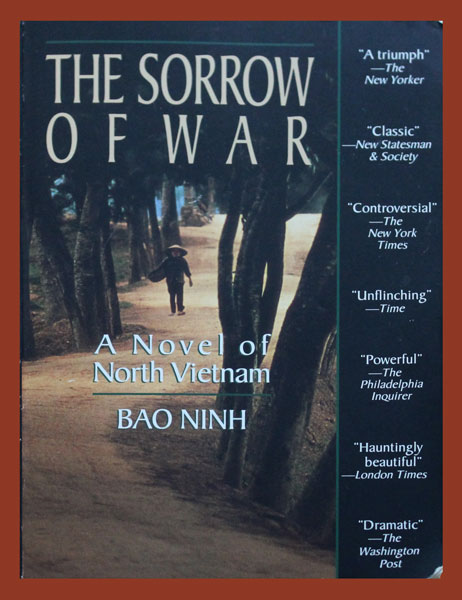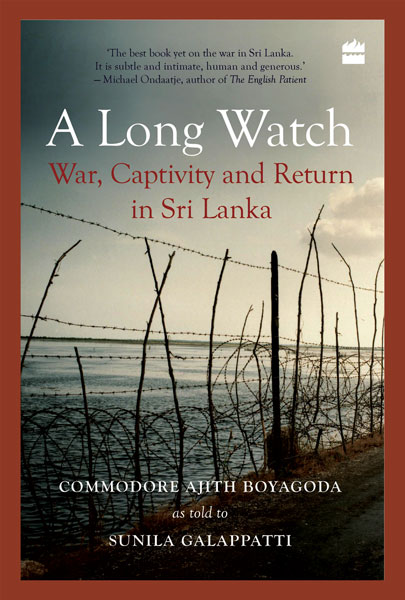The first reads this year Conflict is the theme of two short novels — one about Sri Lanka and the other about Vietnam
I ushered in the year with two books, oddly, both to do with conflict. This wasn’t a conscious choice, it just happened, perhaps the subconscious signalling a desire to learn regarding the futility of war.
A Long Watch: War, Captivity and Return in Sri Lanka is by Commodore Ajith Boyagodaas as told to Sunila Galappatti. Boyagoda was the topmost ranked Sri Lankan officer captured by the LTTE (Liberation Tigers of Tamil Eelam), and held by them for eight years. Upon his release, he was accused of being a traitor and pushed to retiring from the navy. In this quiet, understated book which reflects the conversational tone of speech, he talks about his joining the navy, rising in its ranks, the sinking of his ship and his capture by the LTTE, the years spent in their custody and his conversations with his captors, and the aftermath of this experience.
The second book is The Sorrow of War by Bao Ninh (real name Hoang Au Phuong). Published in 1990, it is widely regarded as a classic about what the Americans call the Vietnam war, and the Vietnamese refer to as the American war. Presented as a work of fiction quite clearly based on the author’s own experiences, it tells of the protagonist Kien’s years in the war and who is now clearing the Jungle of Screaming Souls of corpses. This is where, in 1969, his 500-strong battalion was obliterated: he is one of only ten to survive.
Boyagoda was helming the ‘Sagarawardene’, the Sri Lankan navy’s biggest ship, when it was sunk by the LTTE. He and his Leading Supply Assistant, Vijitha, were captured. He became a convenient bargaining chip for the Tigers — not that the Sri Lankan government was listening. It took eight years to negotiate the prisoner swap that saw the release of Boyagoda and Vijitha. We learn something about the thinking of the Tamil Tigers through Boyagoda’s conversations with his captors. Although he is treated with deference, the years of separation, uncertainty and privation take their toll. Even so, there is no anger, bitterness or hatred. He is factual and philosophical. In fact, many people concluded that he suffered from the Stockholm Syndrome, a sense of empathy with the ‘enemy’.
In an article titled ‘The risks of testimony: Memories of captivity with the Tamil Tigers’ and published in The Wire in July 2016, Sunila Galappatti writes: “It takes a long time to tell this story to friends: to say that I have a book just out; that I worked on it for five years without speaking openly about it; that it is a memoir written in the voice of a naval officer who was held captive for eight years during the Sri Lankan civil war and that he speaks of that experience in an understated and accepting way. This acceptance is the most surprising thing about the story and, almost immediately, people ask, “Did he go to Stockholm?” I tell them it is a joke the commodore makes. ‘Maybe I have Stockholm syndrome,’ he will say, and laugh. How is he to know, or I? We are not able to make a diagnosis, any more than the people who ask the question.”
Boyagoda himself says, “I know the Tigers were capable of great brutality. There are many who can testify to this and many who did not survive it. My experience was not so bad. So, no one believed me.” This approach makes the book a thoughtful reflection on the backrooms of civil war. For instance, early in his captivity, he says: “My first morning as prisoner, I’d heard ‘tttsktttsk’ at the window. It was one of the guards outside. He was trying to get my attention to see if I knew what the time was. I couldn’t believe it. I was not used to anyone addressing with a smacking of teeth. I tried to ignore the guard but he was insistent. My blood boiled. I turned to him and said, ‘There is a way to address an officer — I am a commander in the Sri Lankan Navy’. The guard bridled in turn. He said, ‘You no commander here — you commander Ceylon Navy — here you Tamil Eelam prisoner’. In his anger he had unconsciously cocked his rifle at me. I now thank this guard, Sridharan, for teaching me a first essential lesson. Being a prisoner was different from being a man in the world. I would have to adapt quickly.”
The narrative is neatly edited, with the commodore’s insights weaving seamlessly into the arrangement of events. Viewed objectively, Boyagoda’s arguments seem reasoned and astute as, for instance, when he says, upon their release: “It must have been hard to watch us being freed while they remained, essentially, in captivity. I remembered the story of Mohan’s mother who said to him ‘you have lost your own freedom by seeking it for others’. A lot of these cadres, even the ones who joined the LTTE voluntarily, joined as teenagers. That is when the mind is more open to militancy. But eventually you want more of life than a singular cause.This is why I believe that thirty years of fighting wouldn’t do. If the LTTE wanted to achieve any of its goals it needed to achieve them in ten years… You think how difficult it is for an elected government to keep popular support for more than a decade. How much less likely is it then that a self-appointed militia would keep the support of its people?” A Long Watch offers an important perspective on the civil war that ravaged Sri Lanka.
“On the banks of the Ya Crong Poco river, on the northern flank of the B3 battlefield in the Central Highlands, the Missing In Action body-collecting team awaits the dry season of 1976.” This is how The Sorrow of War begins. It also draws upon the past: memories of childhood, green fields, platoons of soldiers, love and longing, the crushing insistence of rain, hunger and home, families exterminated, bayonets and blood. For a novel that packs so much, the book is pretty small, at 227 pages. It is also stylistically sophisticated, with the persona of the author and the protagonist constantly merging and separating, moving from reminiscences related to the fighting and life before and after, to the writing of this novel: “After all his trial essays, short stories and novellas comes this novel, which he suddenly realises is his last adventure as a soldier. Curious, for it is at the same time his most serious challenge in life; in writing this work he has driven himself to the brink of insanity. There is no escape, no saviour to help him. He alone must meet this writing challenge, his last duty as a soldier.”
More than 40 years after it ended, the effects of the war remain, not just on the ground or in memorials and museums and history books, but in minds, and in the very air of Vietnam. In an article in The Guardian in 2006, Suzanne Goldenberg discusses why Bao Ninh didn’t publish again, even though he did write another novel, Steppe. He told her, “I compared everything I wrote to everything I wrote in the past, and it’s not natural like it was before.” The net suggests he has still not published another novel.
As Goldenberg writes, “When it was first published… Ninh’s novel…was a revelation… no novelist had dared to write about the brutality of the war, and the lasting damage it inflicted on a generation of Vietnamese.” She quotes poet Duong Tuong as saying it was the first truthful book about the war: “Most of the novels about the Vietnam war praised the heroism of the soldiers, and they never delved into the innermost feelings of those who took part in the fighting.” The honesty obviously spoke to those directly affected by the war because it was “loved by the soldiers who fought in the war — including American veterans reading it in translation —
and condemned by Vietnamese officialdom, including the writers’ union.” It appears the novel was initially published in Vietnamese as The Destiny of Love.
Although the telling of the novel sometimes assumes a fantastical aspect, every page resonates with a flesh and blood reality that seeps through the consciousness. It is as affecting today as it was when it was first banned by the Communist Party.As so many writers have shown, the truth is hard to swallow. Books bring those truths to the front.
The columnist is a children’s writer and senior journalist.


